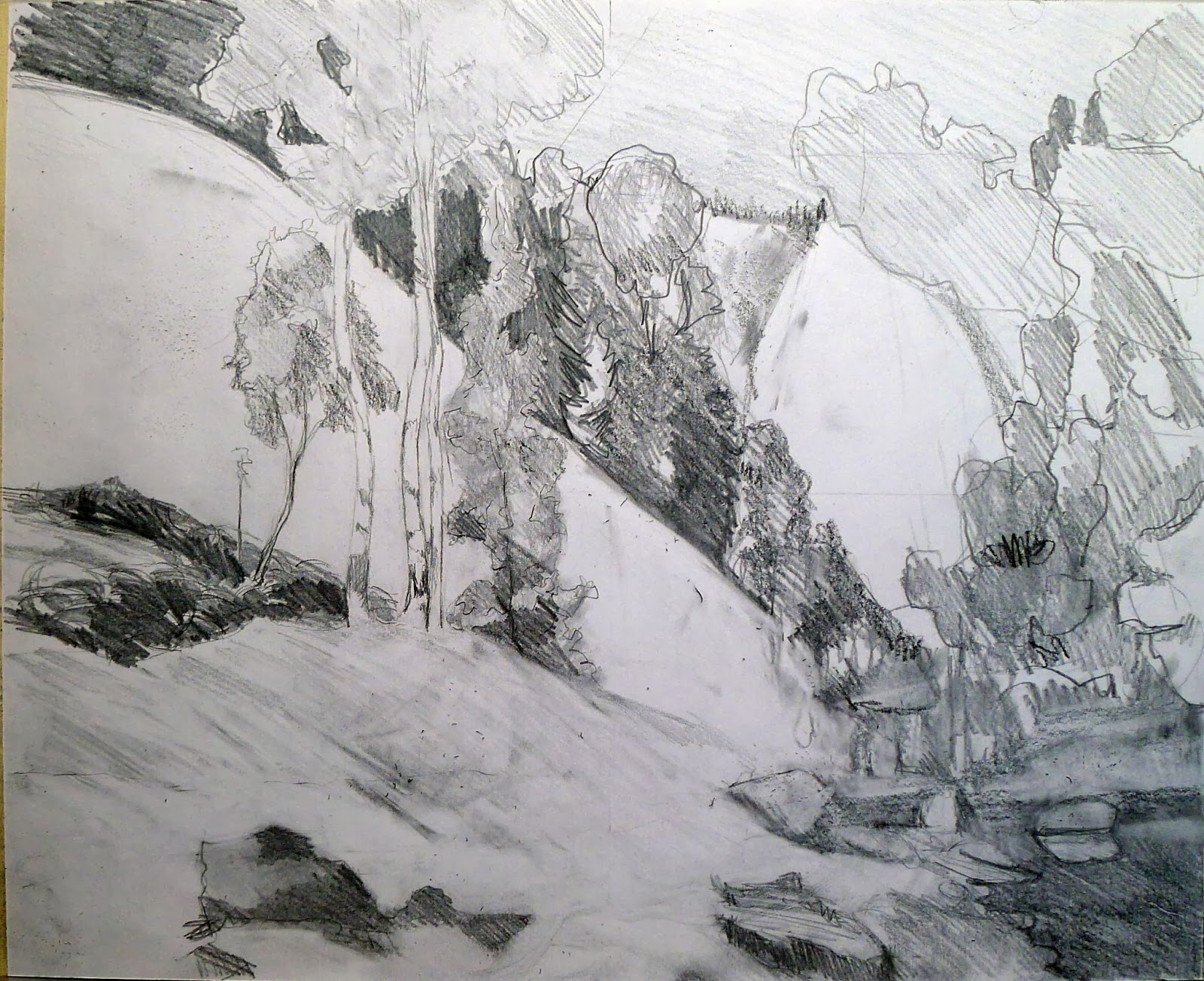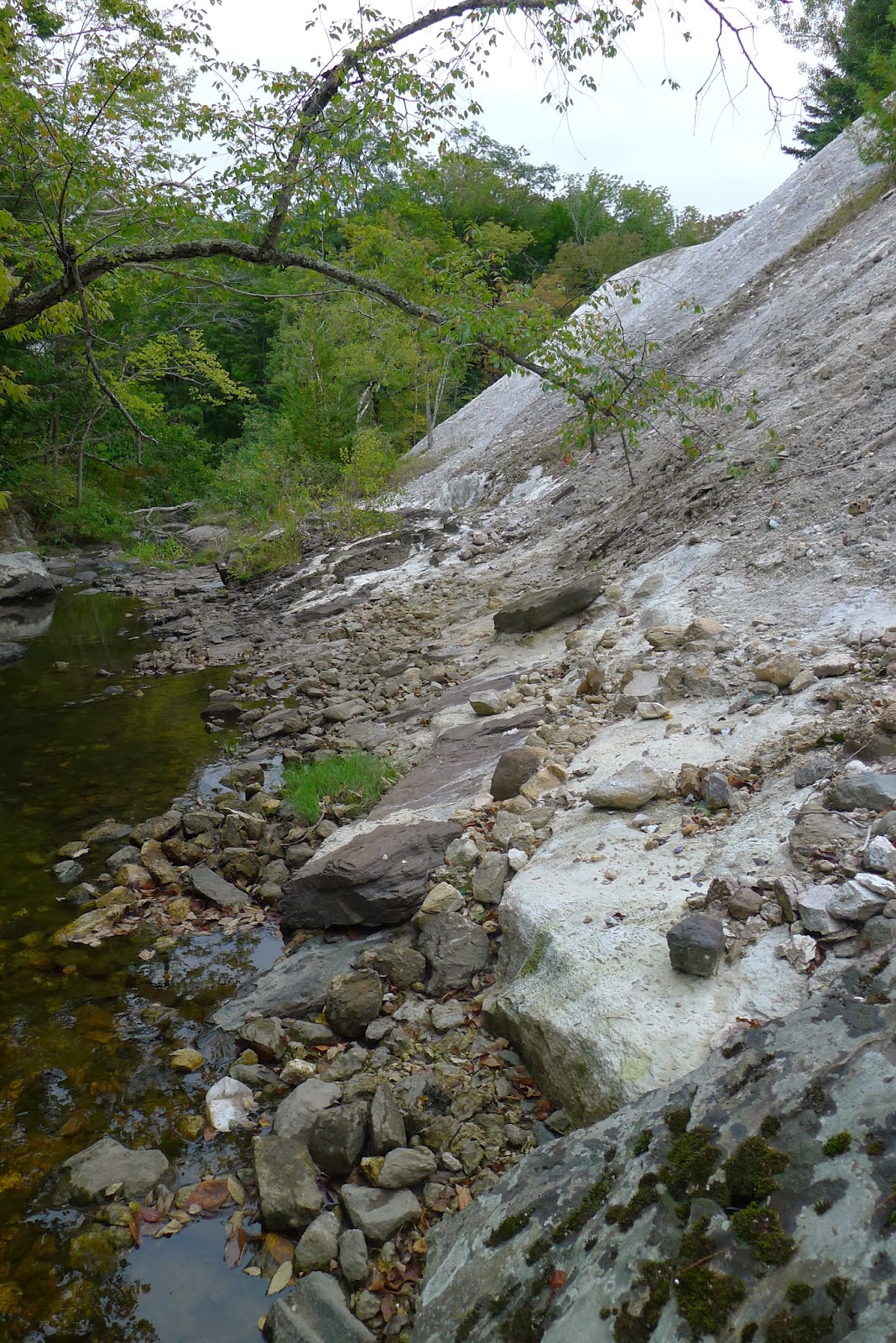 |
| Can’t quite cope with that diagonal bisecting the picture, but I’ll try again. |
When I do a drawing like this, I try to remind myself that even failures are not a waste of time, because one needs to pass through the problem to arrive at the solution.
How I managed to convert the lovely diagonal arrow in my sketch into the overwhelming bisecting diagonal in my drawing, I don’t know. But this is the most difficult of the sketches on my list, and I will repeat it tomorrow and wrestle it into submission.
 |
| It worked so much better in the sketch. |
Midcoast Maine is full of limestone deposits, probably laid down as seashells. When limestone is burned, the carbon-dioxide burns off and quicklime is left. This is an enormously useful material, used to make plaster, paper, mortar, concrete, fertilizer, leather, glue, paint, and glass.
By 1828, there were 60 lime kilns in Midcoast Maine. By the Civil War, the region was producing more than a million casks of lime a year. It helped that Midcoast Maine is heavily forested, fueling the kilns and building the casks used to move the lime to market.
Quicklime had one big problem for the age of wooden ships: if it gets wet it catches on fire.
The master needed a keen sense of smell. The odor of lime being slaked by water was an ominous danger signal… Every crack and crevice through which air might get into the hold and the doors, ports, and smokestack were quickly sealed with plaster made from the lime. Then the craft was headed for the nearest harbor and anchored some distance from the shore and away from other vessels. For at any time she might burst into flames. The schooner was stripped of all movables and the captain and crew sat down to await developments. Sometimes three months would go by before their patience was rewarded and the vessel saved. If, however, the fire could not be smothered, the vessel was towed to some secluded place and scuttled.(W.H. Rowe, The Maritime History of Maine)
 |
| Lime tailings on the Goose River at Rockport, ME |
A devastating fire in 1907 put the final spoke in Rockport’s lime industry, but the ruined lime kilns are still there. More than a hundred years later, great piles of lime tailings are still visible along the banks of the Goose River. Nature slowly attempts to cover this wound, but it is a slow process.
Uninterested as I was in wading across the Goose River or trespassing on private property, I was unable to photograph the lime tailings at an easy angle for drawing. But I think adjusting that diagonal will suffice to fix compositional problem, and the painting will work just fine.
Let me know if you’re interested in painting with me in Maine in 2014 or Rochester at any time. Click here for more information on my Maine workshops!





